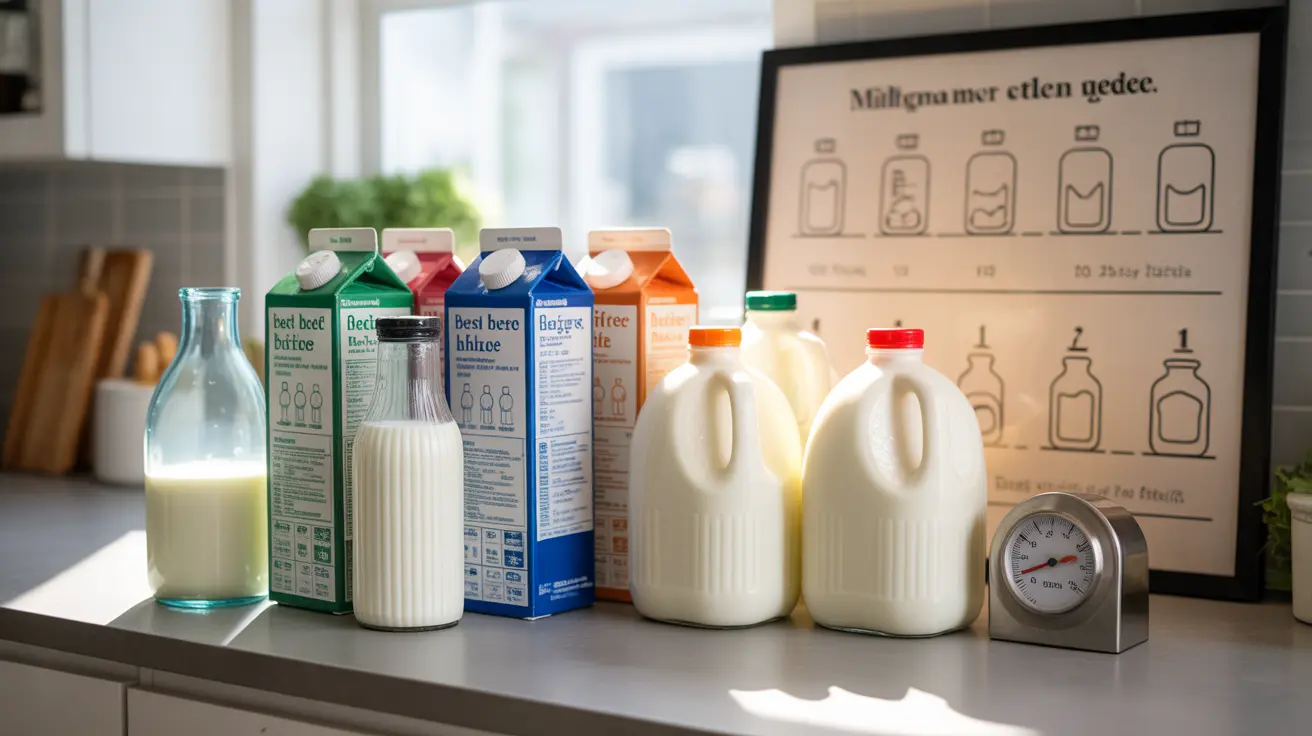Understanding how long milk remains safe to consume is crucial for both food safety and reducing waste. While the date printed on your milk carton provides guidance, several factors influence milk's actual shelf life and safety. This comprehensive guide will help you understand milk storage, spoilage signs, and how different types of milk vary in their longevity.
Understanding Milk Date Labels
Milk containers typically display various date labels, including "sell by," "best if used by," and "use by" dates. These dates aren't necessarily spoilage dates but rather indicators of peak quality. When properly stored, milk can often remain safe to drink several days beyond these printed dates.
Proper Milk Storage Guidelines
The key to maximizing milk's shelf life lies in proper storage techniques. Store milk at or below 40°F (4°C) in its original container. Keep it in the main body of your refrigerator rather than the door, where temperature fluctuations occur more frequently.
Storage Tips for Extended Freshness
- Always seal the container tightly after each use
- Return milk to the refrigerator immediately after pouring
- Keep milk away from strong-smelling foods
- Store milk on interior shelves rather than the door
- Maintain your refrigerator temperature at or below 40°F (4°C)
Types of Milk and Their Shelf Life
Traditional Pasteurized Milk
Regular pasteurized milk typically lasts 5-7 days beyond the printed date when properly stored. Once opened, consume within 4-7 days for best quality and safety.
Ultra-High Temperature (UHT) Milk
UHT milk undergoes a more intense heat treatment, allowing it to last significantly longer than regular pasteurized milk. Unopened UHT milk can remain shelf-stable for up to 6 months at room temperature. Once opened, it should be refrigerated and consumed within 7-10 days.
Signs of Spoiled Milk
Even before the expiration date, milk can spoil if not stored properly. Learn to recognize these common signs of spoilage:
- Sour or unpleasant odor
- Yellow or clumpy appearance
- Thick or lumpy texture
- Off-putting taste
- Bloated container
Frequently Asked Questions
How long is unopened milk safe to drink after the expiration date?
Properly stored, unopened milk typically remains safe to drink for 5-7 days past the printed date. UHT milk can last even longer, up to 2-3 weeks beyond the printed date when unopened.
What are the signs that milk has gone bad even if it is within the expiration date?
Look for changes in smell (sour or unpleasant), texture (lumpy or thick), color (yellowish), or taste (sour). A bloated container can also indicate spoilage. If you notice any of these signs, discard the milk regardless of the date.
How should milk be stored to extend its freshness and safety past the printed date?
Store milk at or below 40°F (4°C) in its original container, on interior refrigerator shelves rather than the door. Keep it tightly sealed and return it to the refrigerator immediately after use. Avoid exposing milk to temperature fluctuations.
How does ultra-high temperature (UHT) milk differ in shelf life compared to regular pasteurized milk?
UHT milk has a significantly longer shelf life than regular pasteurized milk. Unopened UHT milk can last up to 6 months at room temperature, while regular pasteurized milk requires constant refrigeration and typically lasts 5-7 days beyond the printed date.
Is it safe to consume milk a few days after the "sell by," "best if used by," or "use by" date on the carton?
Yes, it's generally safe to consume milk a few days after these dates if it has been properly stored and shows no signs of spoilage. These dates indicate peak quality rather than safety cutoffs. Always check for signs of spoilage before consuming.




